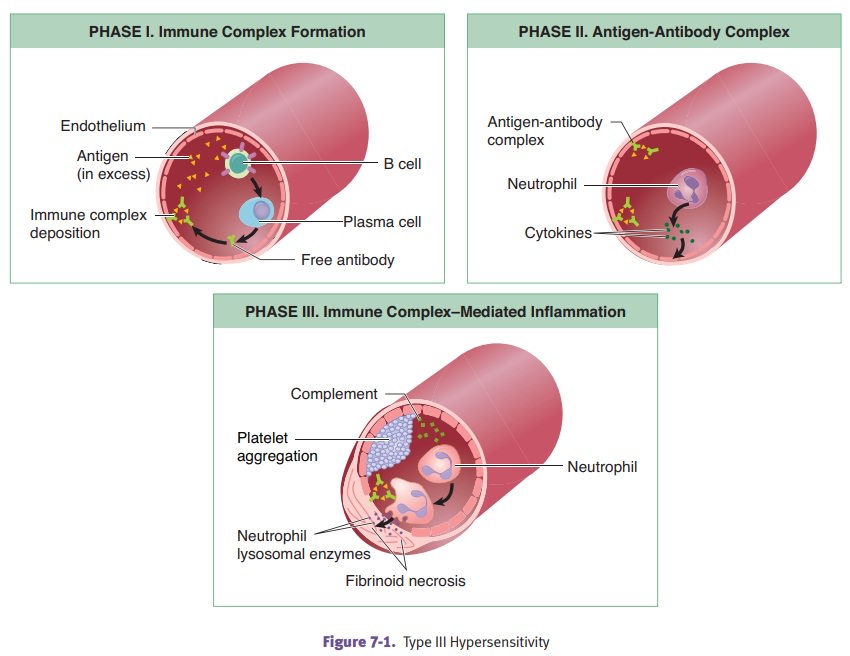Chapter: Pathology: Immunopathology
Hypersensitivity Reactions
HYPERSENSITIVITY REACTIONS
(This
material is included here for reinforcement. It is also covered in the
Immunol-ogy Lecture Notes.)
Type I
(immediate) hypersensitivity reactions(anaphylactic type)are character-ized by IgE-dependent release of
chemical mediators from mast cells and basophils. Cross-linking of IgE bound to
antigen to IgE Fc receptors on the surface of mast cells and basophils causes
degranulation. This binding triggers release of chemi-cal mediators that
include histamine and heparin; eosinophil chemotactic factor; leukotriene B4
and neutrophil chemotactic factor; and prostaglandin D4, platelet-activating
factor (PAF), and leukotrienes C4 and D4. Influx of eosinophils amplifies and
perpetuates the reaction. Effects may be systemic (anaphylaxis, as for example
due to bee stings or drugs) or localized (food allergies, atopy, and asthma).
Type II
hypersensitivity reactions (antibody-mediated) are
mediated by IgG or IgMantibodies directed against a specific target cell or
tissue. Reactions can take several forms.
·
In complement-dependent
cytotoxicity, fixation of complement results in osmotic lysis or opsonization
of antibody-coated cells; examples include auto-immune hemolytic anemia,
transfusion reactions, and erythroblastosis fetalis.
·
In antibody-dependent cell-mediated
cytoxicity (ADCC), cytotoxic killing of an antibody-coated cell occurs; an
example is pernicious anemia. Antireceptor antibodies can activate or interfere
with receptors; examples include Graves disease and myasthenia gravis.
Type III
hypersensitivity reactions(immune complex disease)are characterized bythe formation of in
situ or circulating antibody-antigen immune complexes, which deposit in tissue
resulting in inflammation and tissue injury. Examples include serum sickness,
systemic lupus erythematosus (SLE), and glomerulonephritis.
Type IV
hypersensitivity reactions(cell-mediated type)are mediated by sensitizedT lymphocytes. In
delayed type hypersensitivity, CD4+ TH1 lymphocytes mediate granuloma
formation; examples include the PPD skin test and tuberculosis.
In
cytotoxic T-cell–mediated hypersensitivity, CD8+ T-cell lymphocytes destroy
antigen- containing cells; examples include type 1 diabetes, virus-infected
cells, immune reaction to tumor-associated antigens, and graft rejection.

Related Topics